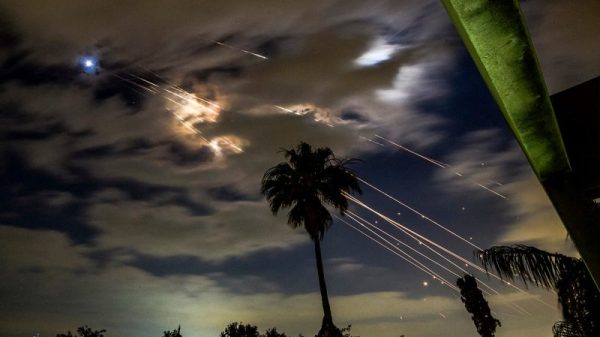Astronomers have used two different exoplanet-detecting satellites to solve a cosmic mystery and reveal a rare family of six planets located about 100 light-years from Earth. The discovery could help scientists unlock the secrets of planet formation.
The six exoplanets orbit a bright star similar to the sun named HD110067, which is located in the Coma Berenices constellation in the northern sky. Larger than Earth but smaller than Neptune, the planets are in a little-understood class called sub-Neptunes commonly found orbiting sunlike stars in the Milky Way. And the planets, labeled b through g, revolve around the star in a celestial dance known as orbital resonance.
There are discernible patterns as the planets complete their orbits and exert gravitational forces on one another, according to a study published Wednesday in the journal Nature. For every six orbits completed by planet b, the closest planet to the star, the outermost planet g completes one.
As planet c makes three revolutions around the star, planet d does two, and when planet e completes four orbits, planet f does three.
This harmonic rhythm creates a resonant chain, with all six planets aligning every few orbits.
What makes this planetary family an unusual find is that little has changed since the system formed more than 1 billion years ago, and the revelation could shed light on the evolution of planets and the origin of prevalent sub-Neptunes in our home galaxy.
Detecting a mystery
Researchers first took notice of the star system in 2020 when NASA’s Transiting Exoplanet Survey Satellite, or TESS, detected dips in the brightness of HD110067. A dip in starlight often suggests the presence of a planet that’s passing between its host star and an observing satellite as the planet travels along its orbital path. Detecting these dips in luminosity, known as the transit method, is one of the main strategies used by scientists to identify exoplanets via ground and space-based telescopes.
Astronomers determined the orbital periods of two planets around the star from that 2020 data. Two years later, TESS observed the star again, and the evidence suggested different orbital periods for those planets.
When the data sets didn’t add up, astronomer and lead study author Rafael Luque and some of his colleagues decided to take another look at the star using a different satellite — the European Space Agency’s CHaracterising ExOPlanet Satellite, or Cheops. While TESS is used to observe fractions of the night sky for short observations, Cheops observes one star at a time.
“We went fishing for signals among all the potential periods that those planets could have,” said Luque, a postdoctoral scholar in the University of Chicago’s department of astronomy and astrophysics.
The data collected by Cheops helped the team solve the “detective story” started by TESS, he said. Cheops was able to determine the presence of a third planet in the system, which was crucial to confirming the orbital periods of the other two planets, as well as their rhythmic resonance.
As the team matched up the rest of the unexplained TESS data with the Cheops observations, they discovered the other three planets orbiting the star. Follow-up observations with ground-based telescopes confirmed the presence of the planets.
The dedicated time Cheops spent observing the star helped astronomers iron out the mixed signals from the TESS data to determine how many planets were crossing in front of the star and the resonance of their orbits.
“Cheops gave us this resonant configuration that allowed us to predict all the other periods. Without that detection from Cheops, it would have been impossible,” Luque said.
The closest planet takes just over nine Earth days to complete an orbit around the star, and the most distant takes about 55 days. All of the planets have quicker revolutions around their star than Mercury, which takes 88 days to complete one lap around the sun.
Given how close they are to HD110067, the planets likely have blistering average temperatures similar to Mercury and Venus, ranging between 332 degrees Fahrenheit and 980 degrees Fahrenheit (167 degrees Celsius and 527 degrees Celsius).
Why planetary rhythm matters
The formation of planetary systems, like our own solar system, can be a violent process. While astronomers believe that planets tend to initially form in resonance around stars, the gravitational influence of massive planets, a graze with a passing star or a collision with another celestial body can upset the harmonic balance.
Most planetary systems are not in resonance, and those with multiple planets that have preserved their initial rhythmic orbits are rare, which is why astronomers want to study HD110067 and its planets as a “rare fossil” in detail, Luque said.
“We think only about one percent of all systems stay in resonance,” Luque said in a statement. “It shows us the pristine configuration of a planetary system that has survived untouched.”
The discovery is the second time Cheops has helped reveal a planetary system with orbital resonance. The first one, known as TOI-178, was announced in 2021.
“As our science team puts it: Cheops is making outstanding discoveries sound ordinary. Out of only three known six-planet resonant systems, this is now the second one found by Cheops, and in only three years of operations,” said Maximilian Günther, ESA Cheops project scientist, in a statement.
A perfect observation target
The system can also be used to study how sub-Neptunes form, the study authors said.
While sub-Neptunes are common in the Milky Way galaxy, they don’t exist in our own solar system. And there is little agreement among astronomers about how these planets form and what they’re made of — so an entire system consisting of sub-Neptunes could help scientists determine more about their origin, Luque said.
Many exoplanets have been found orbiting dwarf stars that are much cooler and smaller than our sun, such as the famed TRAPPIST-1 system and its seven planets, announced in 2017. While the TRAPPIST-1 system also has a resonant chain, the faintness of the host star makes observations difficult.
But HD110067, which has 80% the mass of our sun, is the brightest known star with more than four planets in orbit, so observing the system is much easier.
Initial detections of the mass of the planets suggest that some of them have puffy hydrogen-rich atmospheres, which makes them ideal targets of study for the James Webb Space Telescope. As starlight filters through the planets’ atmospheres, Webb can be used to determine the composition of each world.
“The sub-Neptune planets of the HD110067 system appear to have low masses, suggesting they may be gas- or water-rich. Future observations, for example with the James Webb Space Telescope, of these planetary atmospheres could determine whether the planets have rocky or water-rich interior structures,” said study coauthor Jo Ann Egger, doctoral student in astrophysics at the University of Bern in Switzerland, in a statement.





























